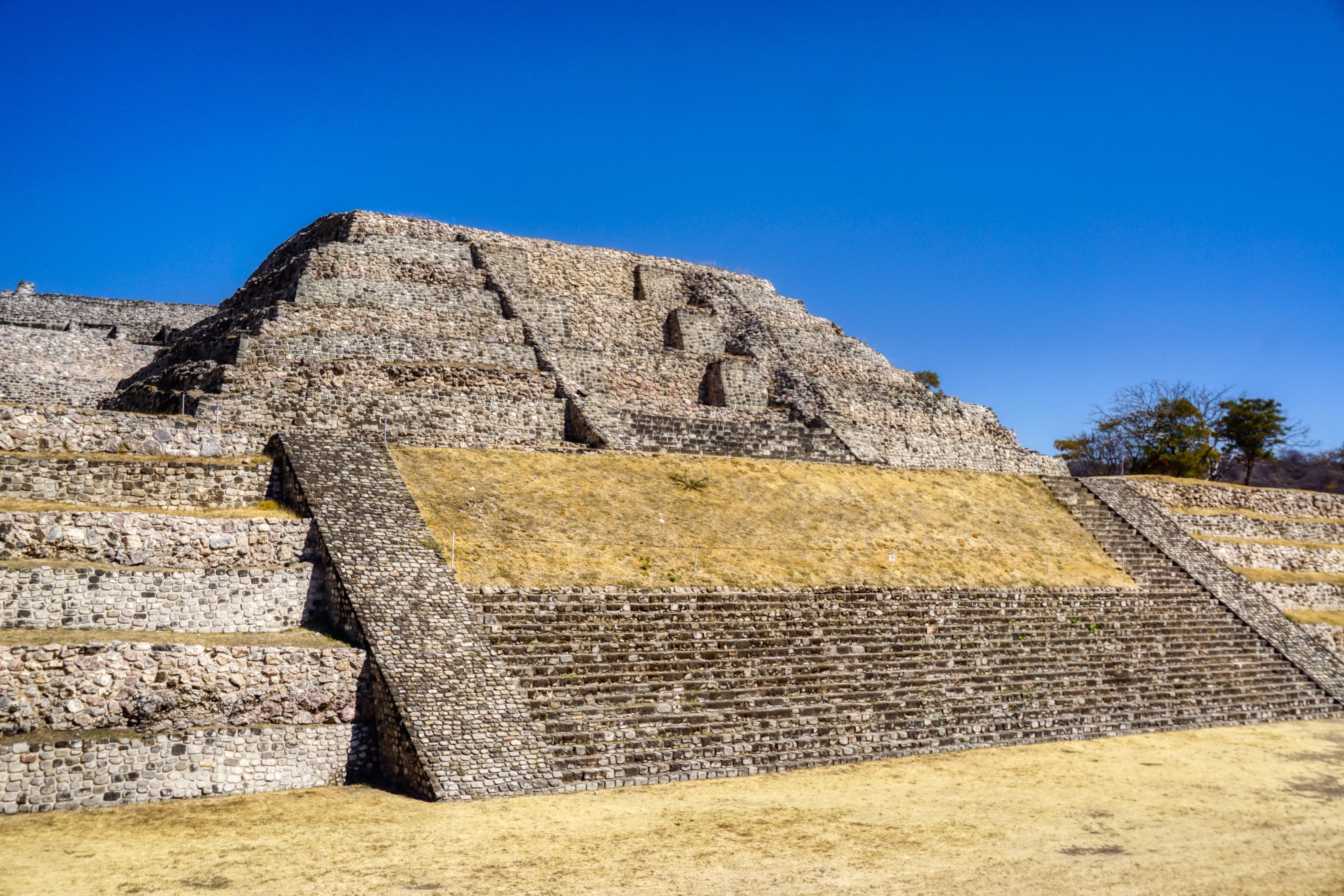
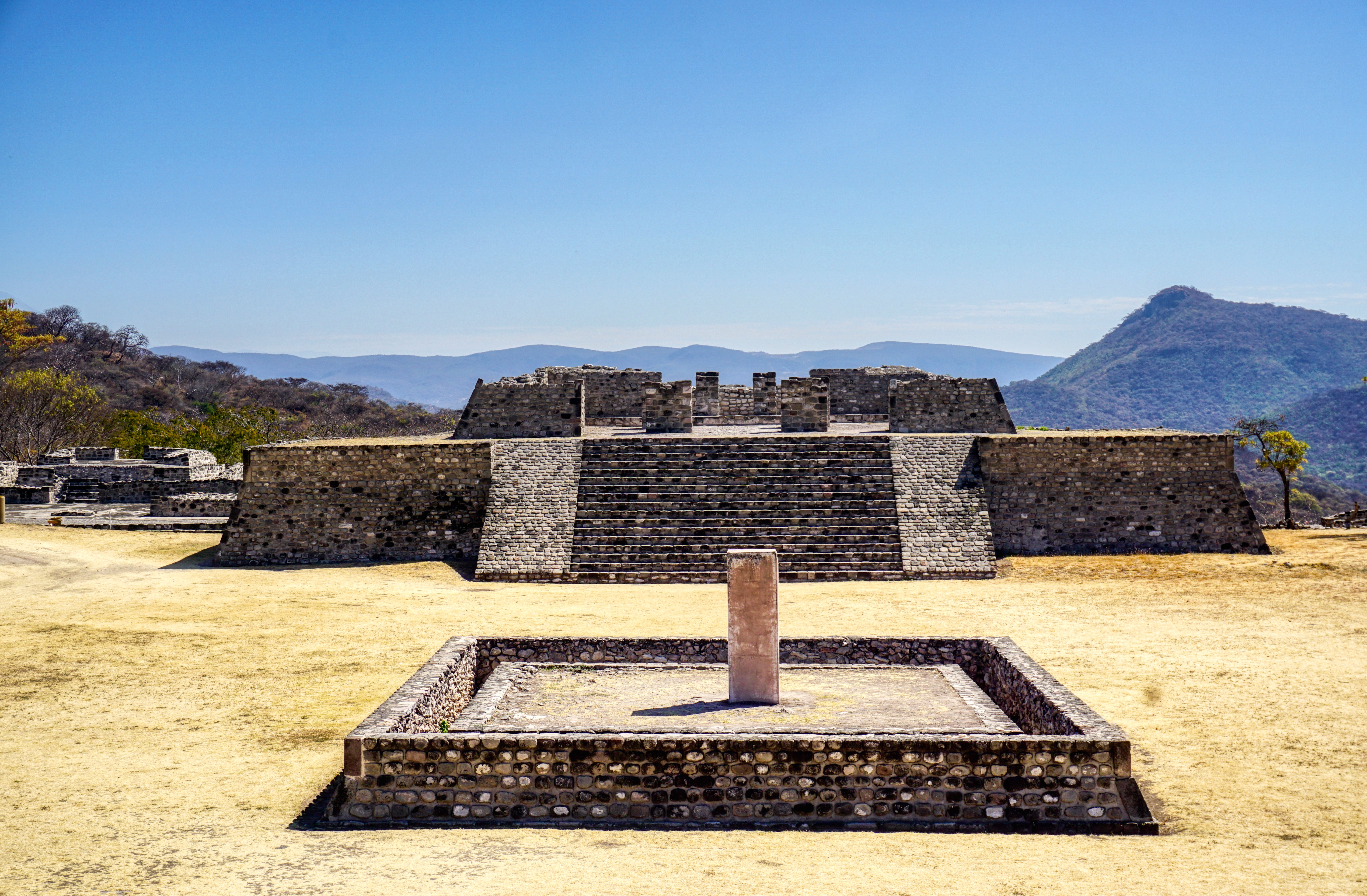
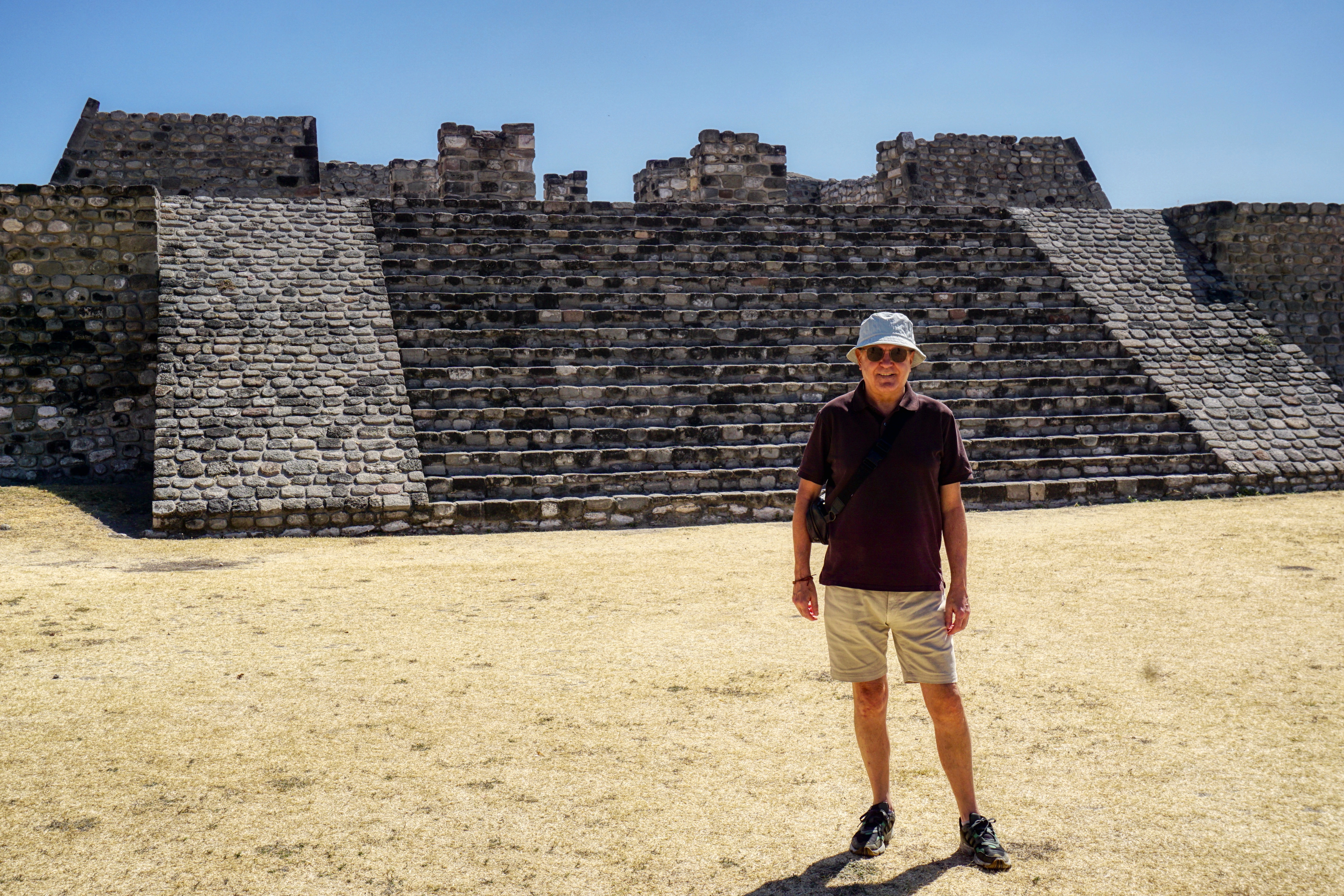
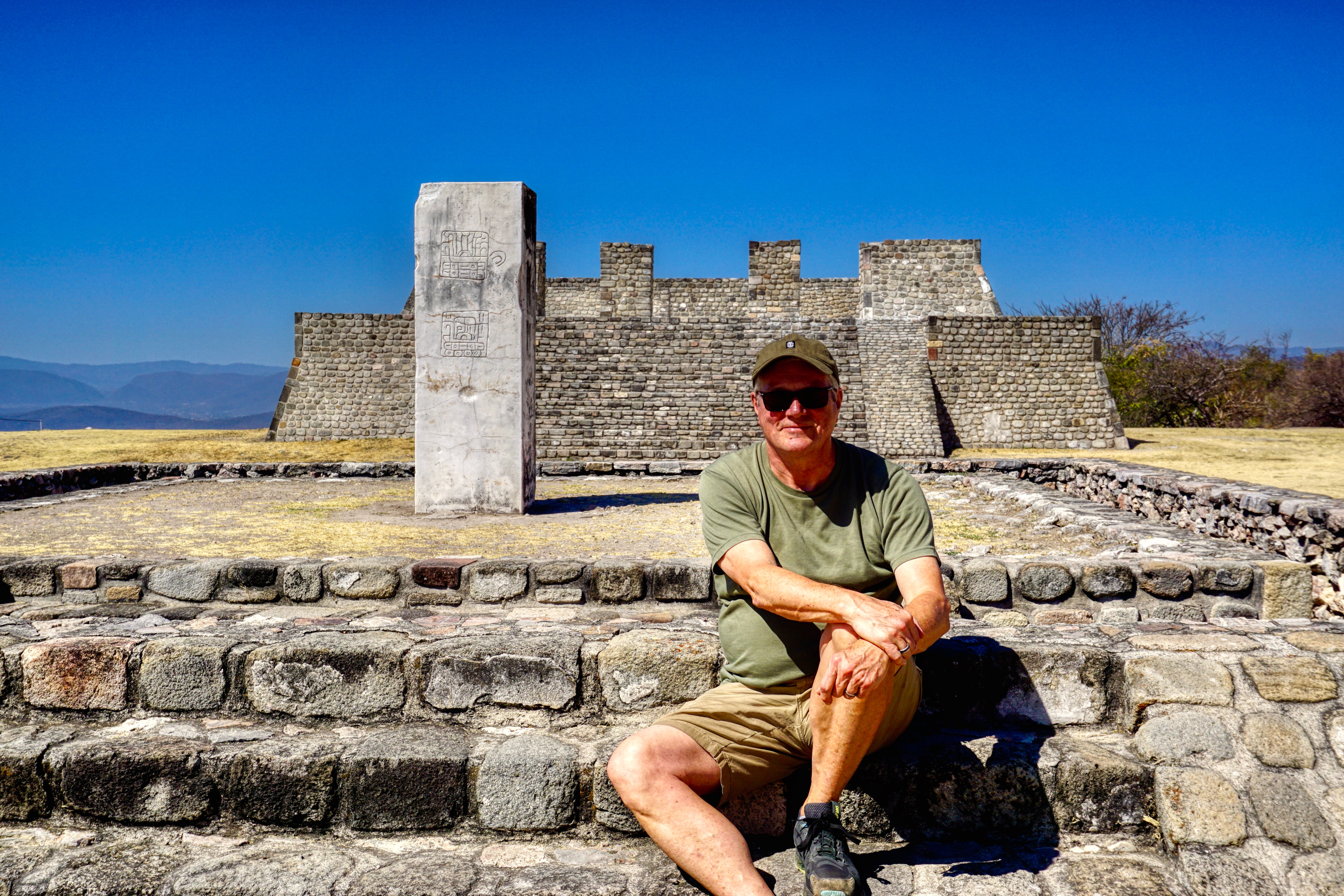
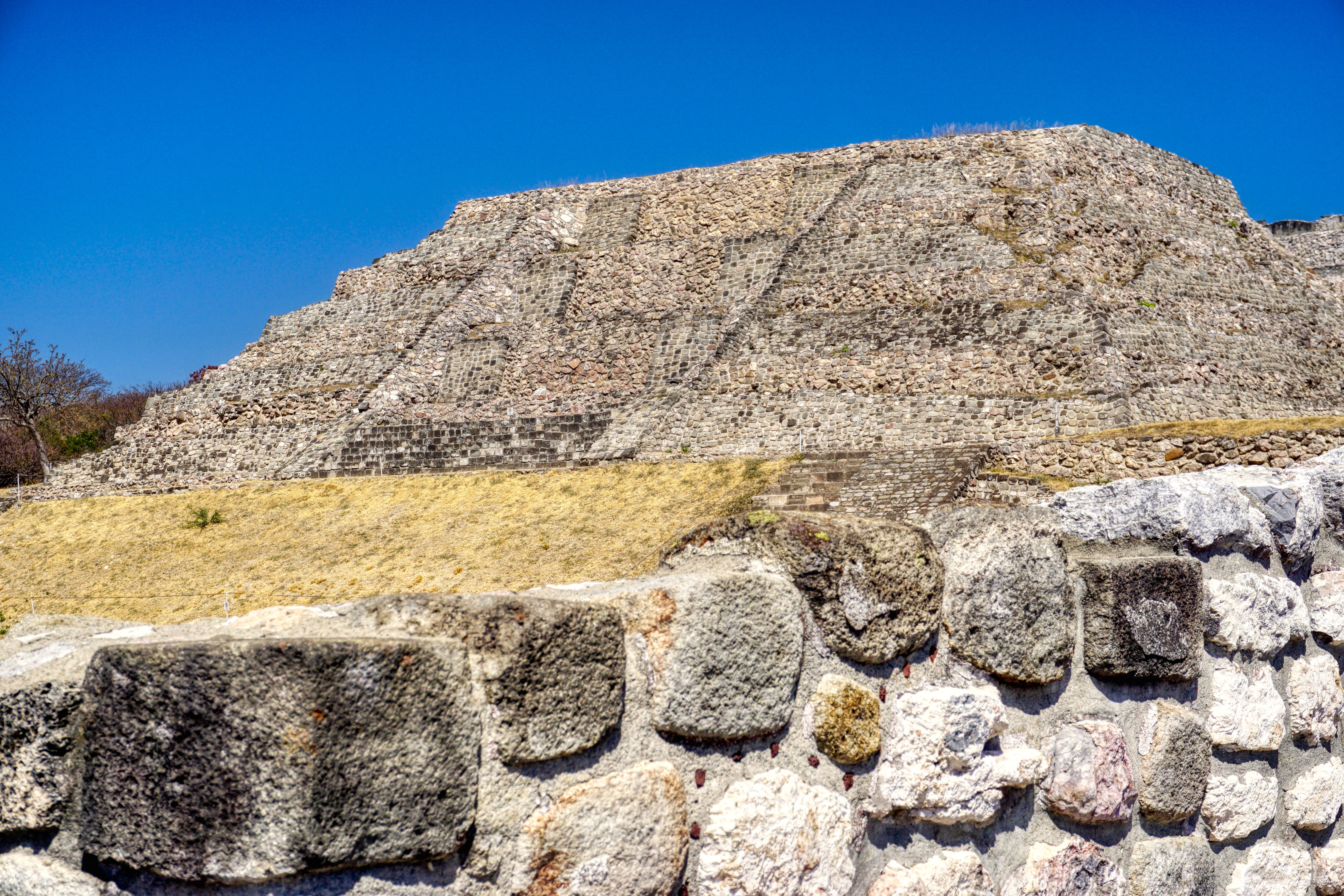
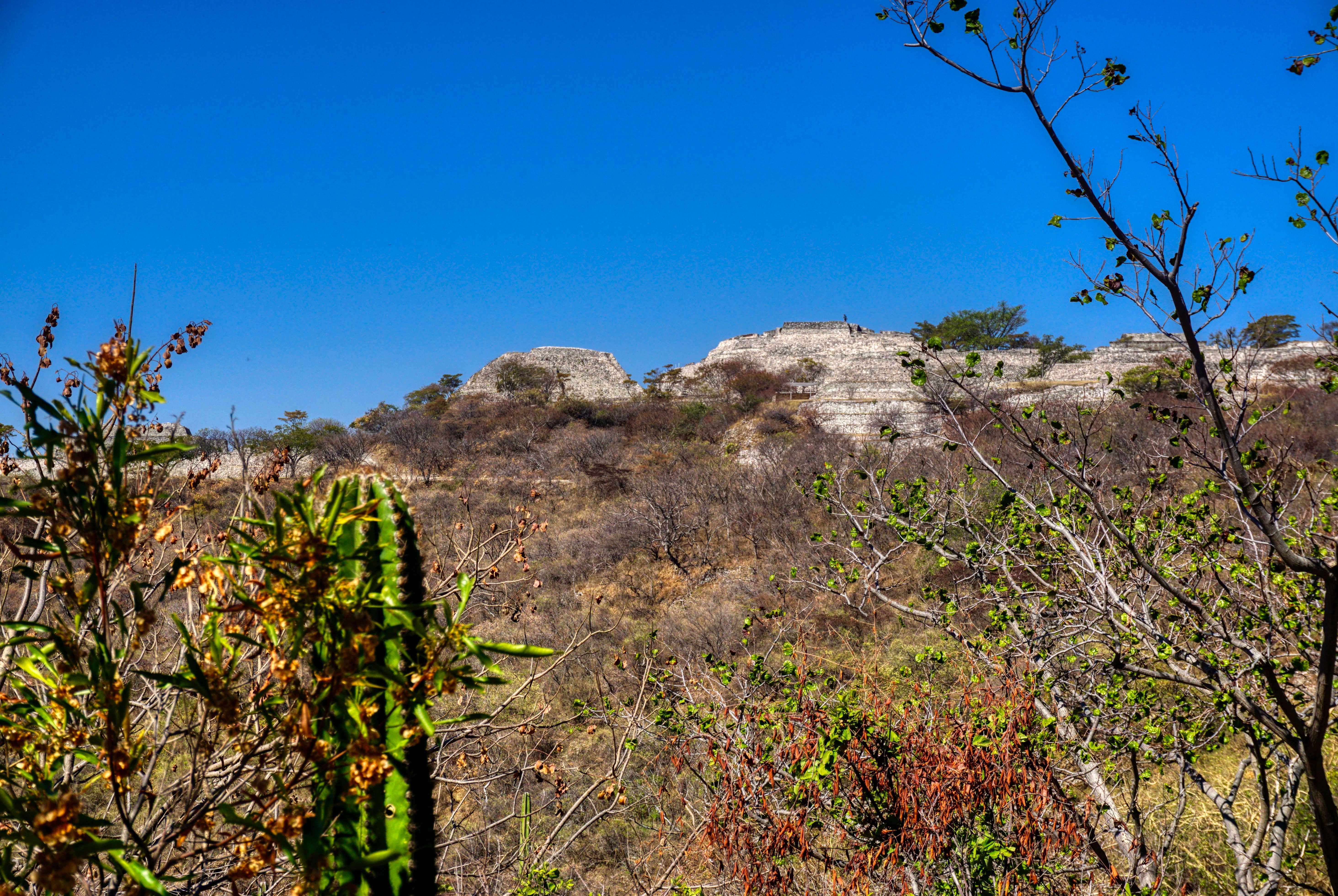
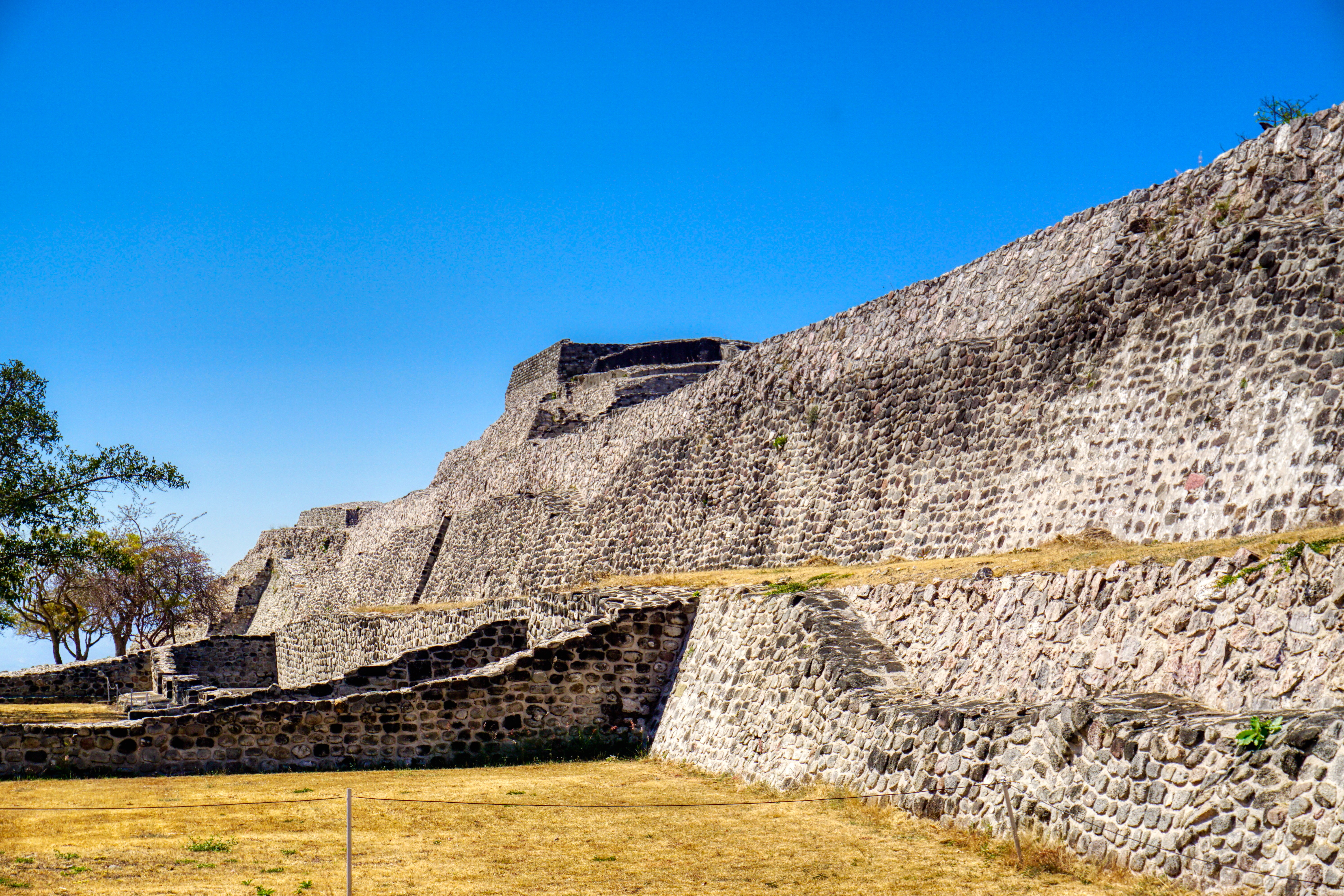
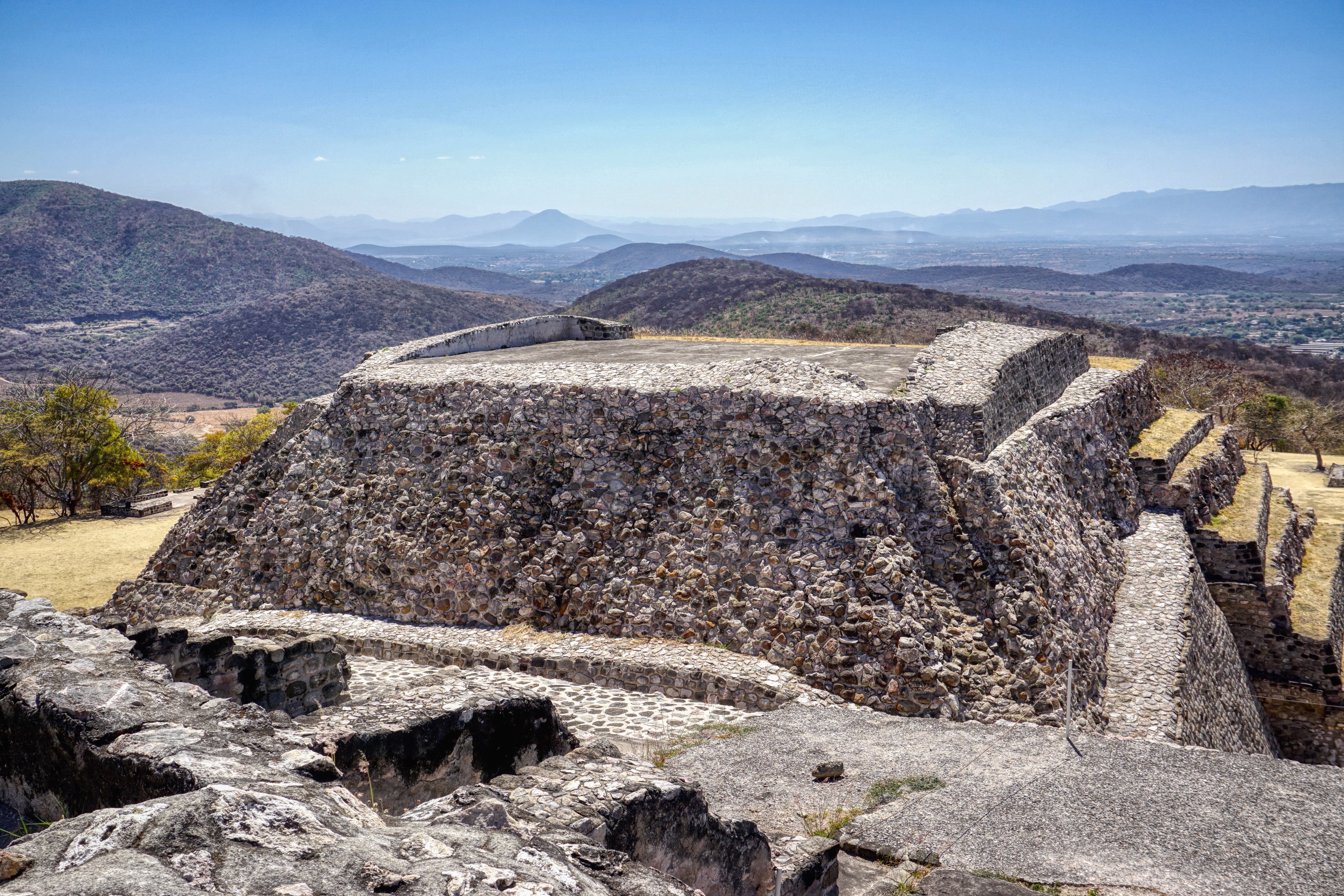
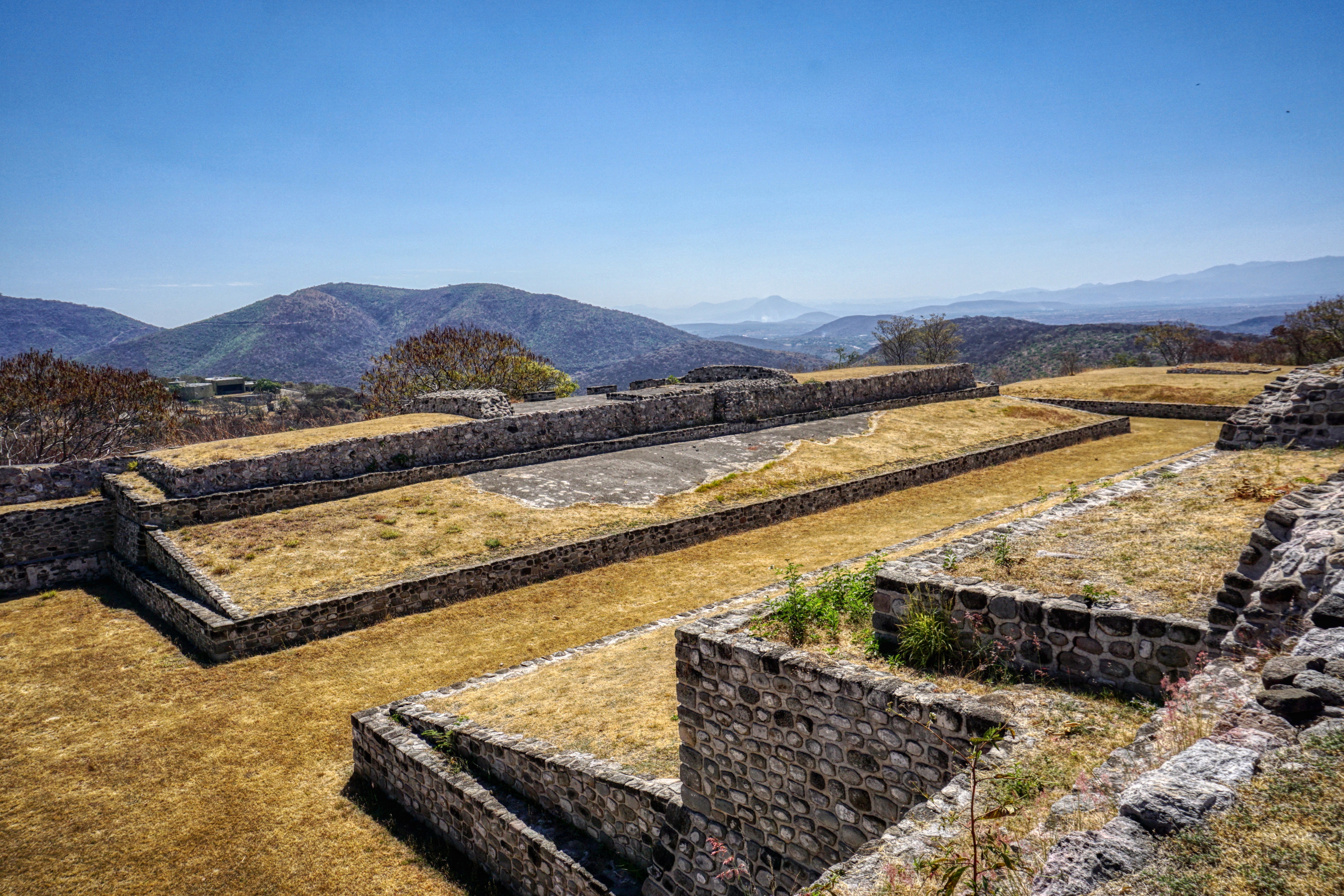
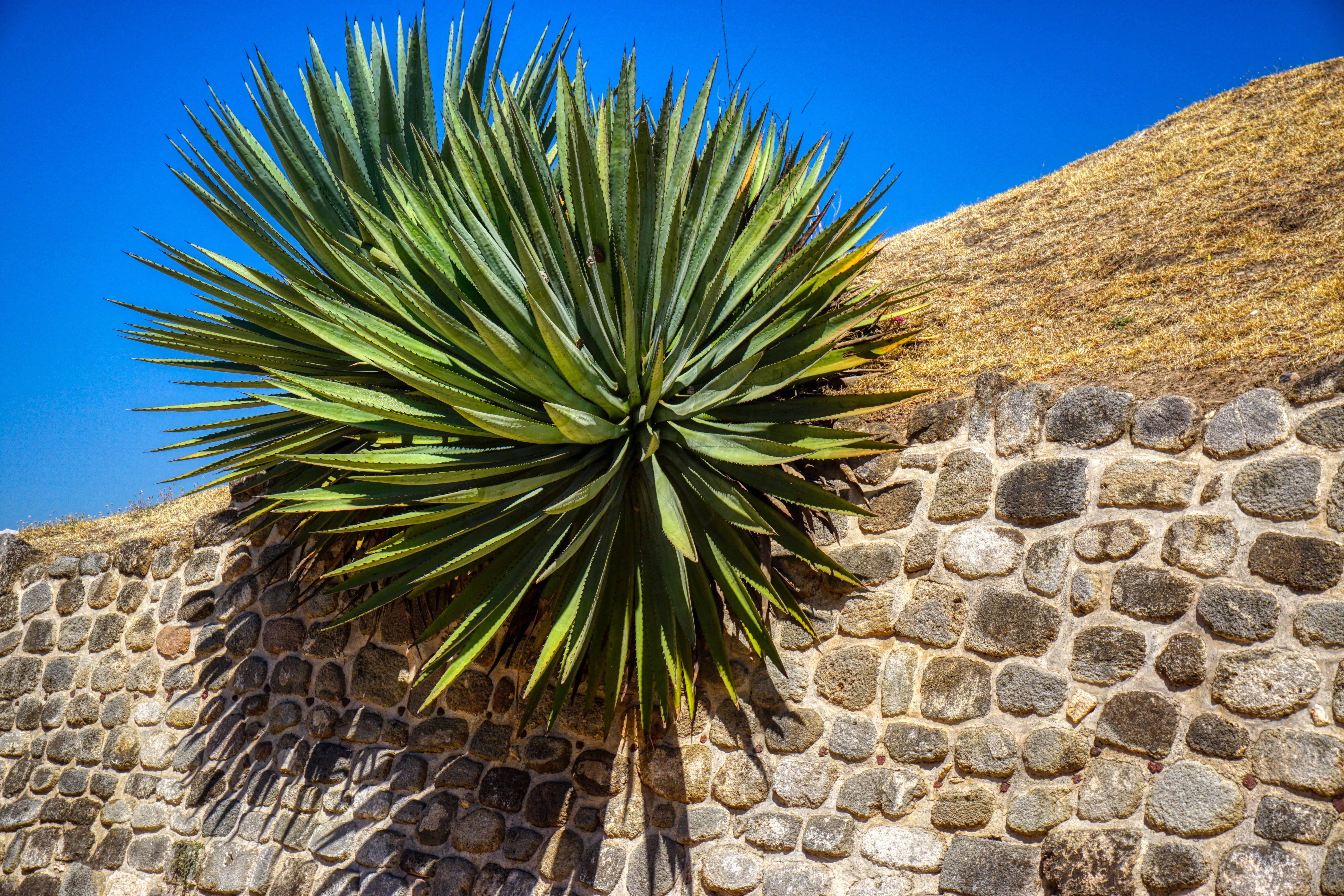
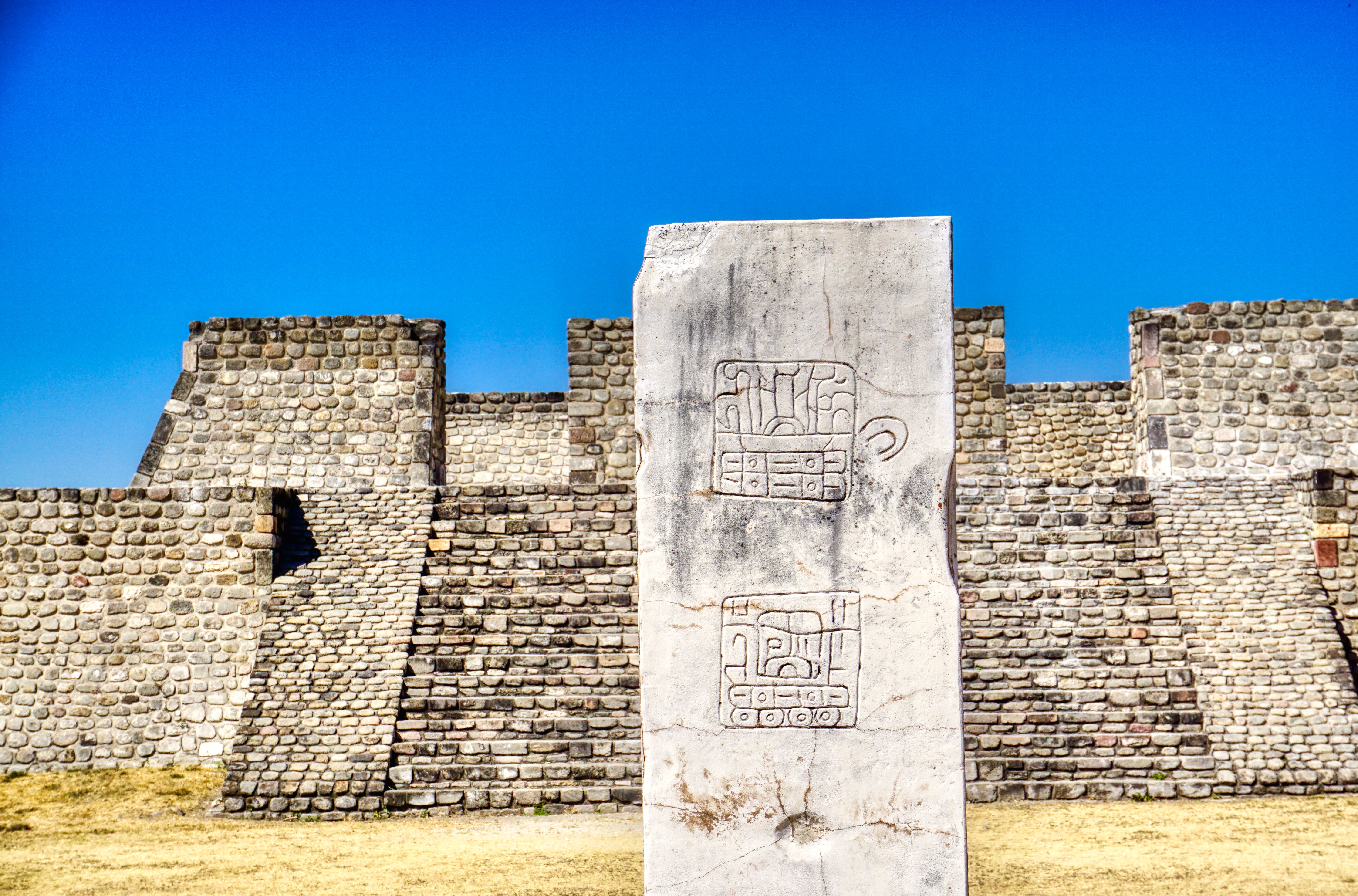
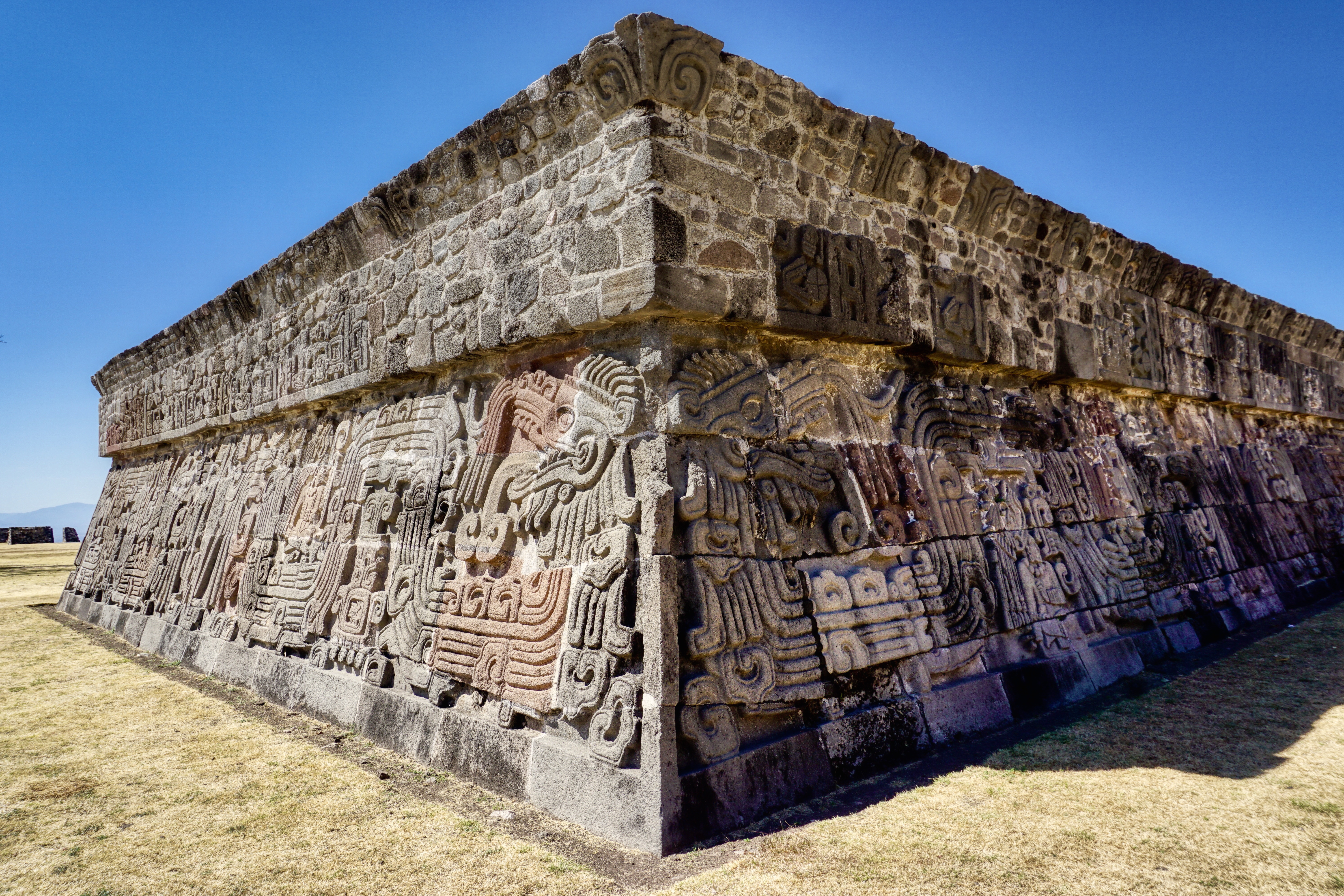
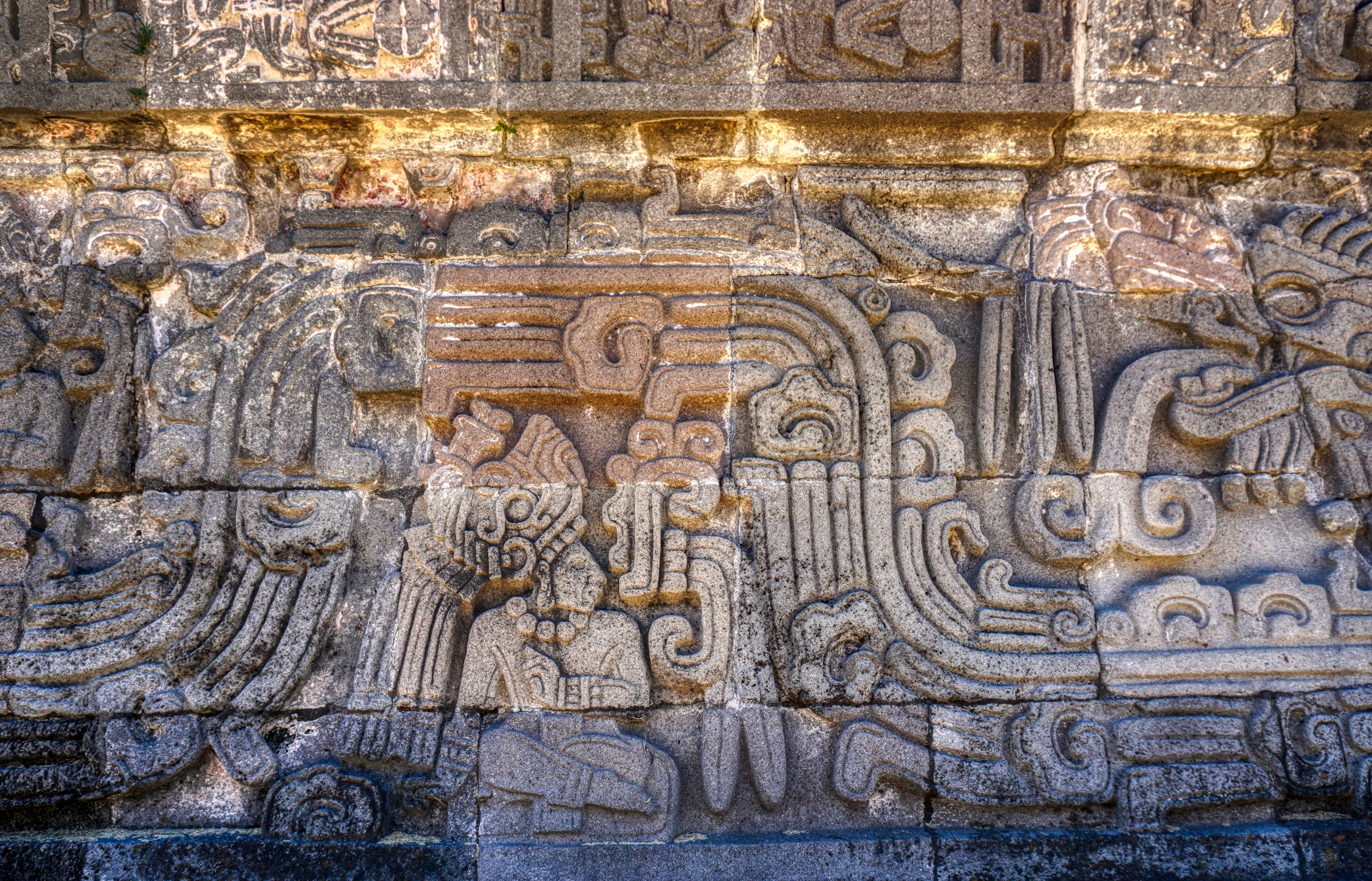
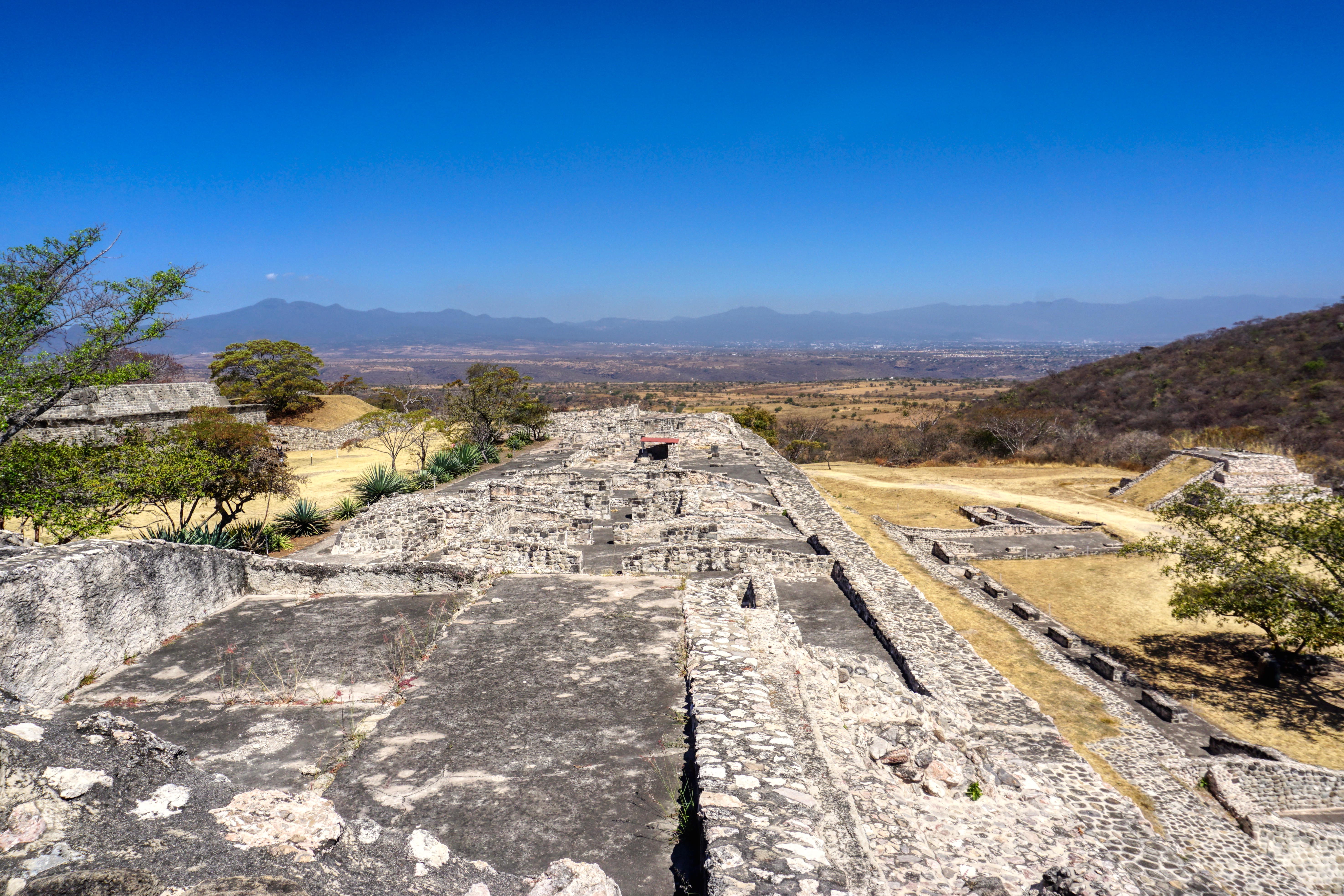

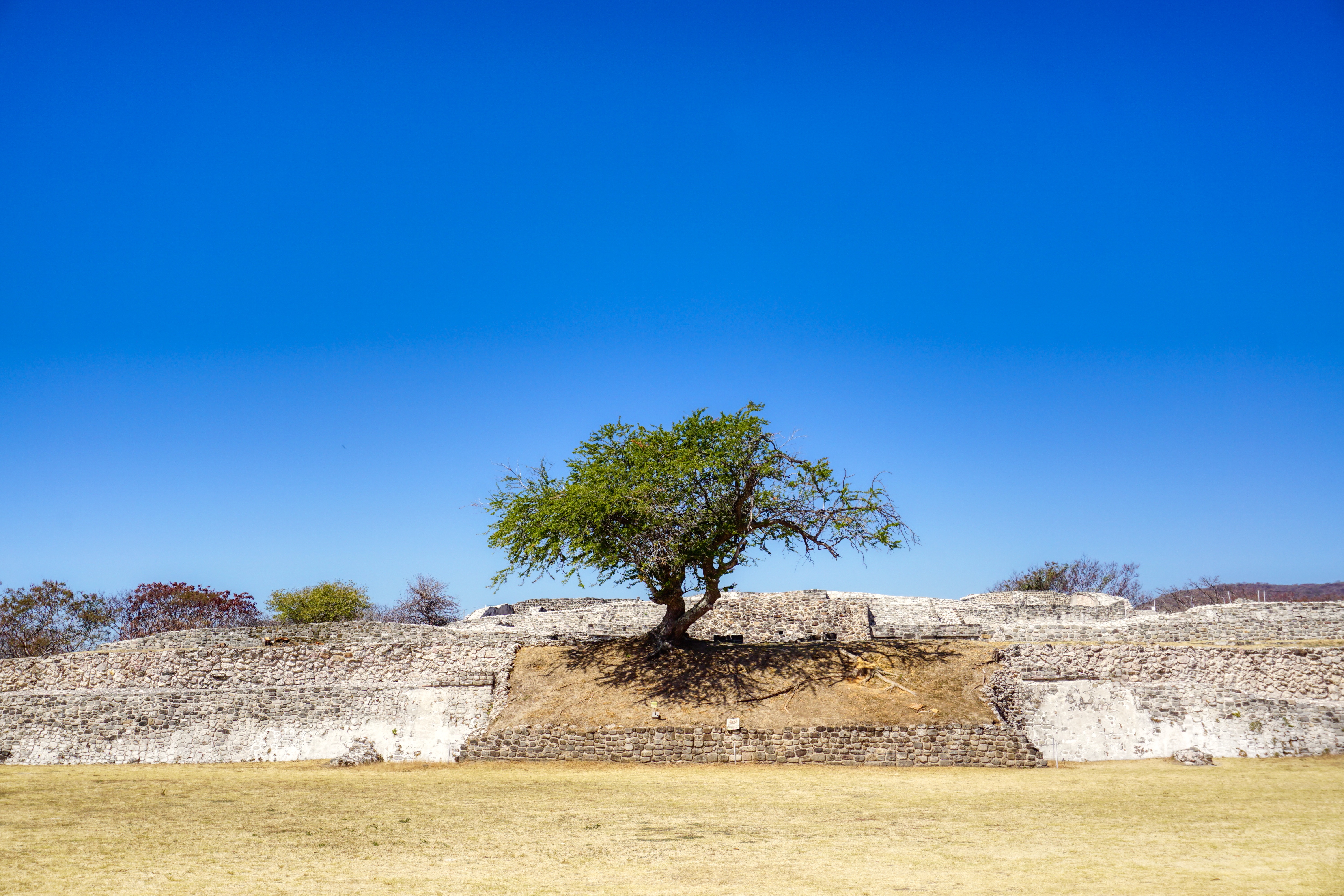
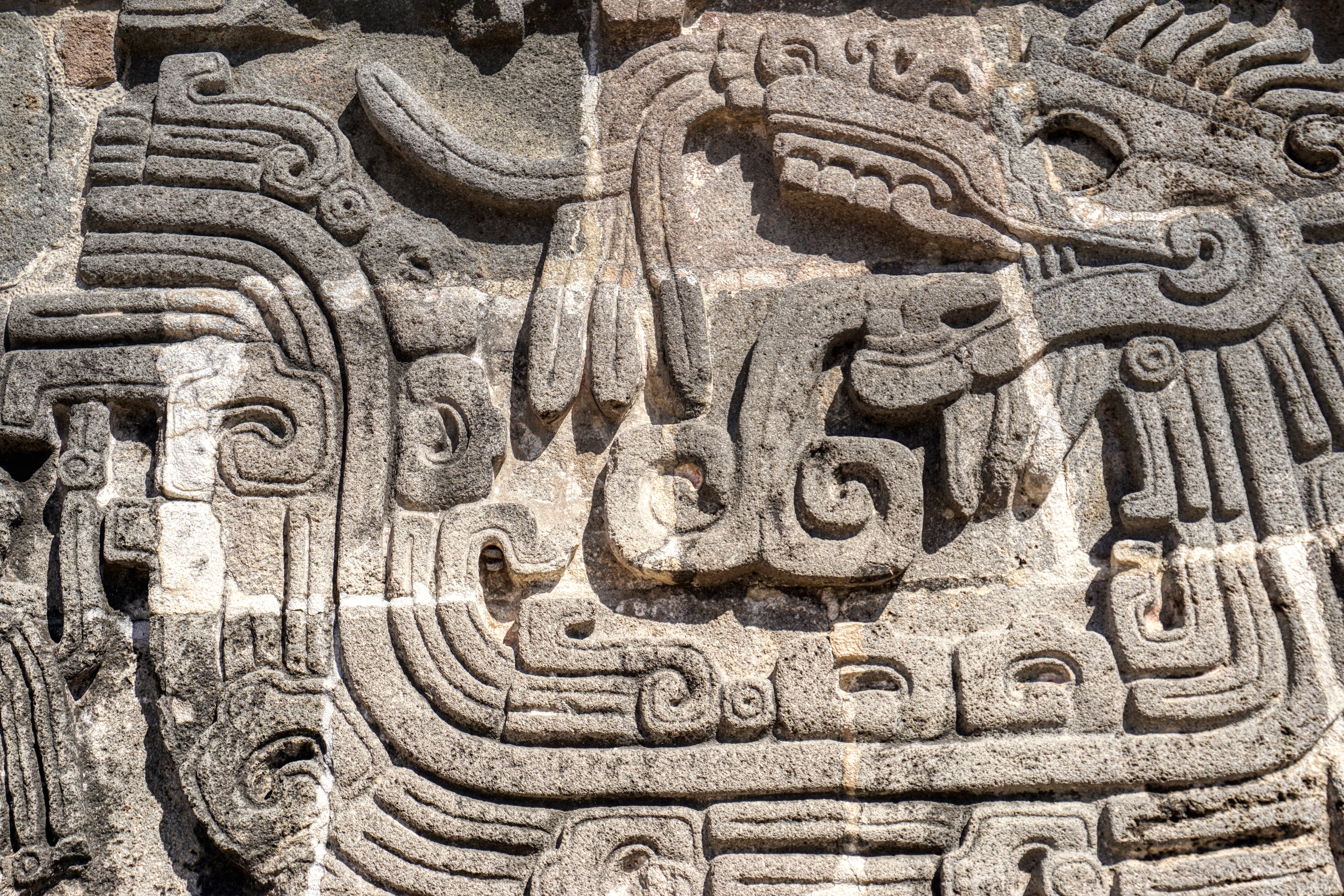
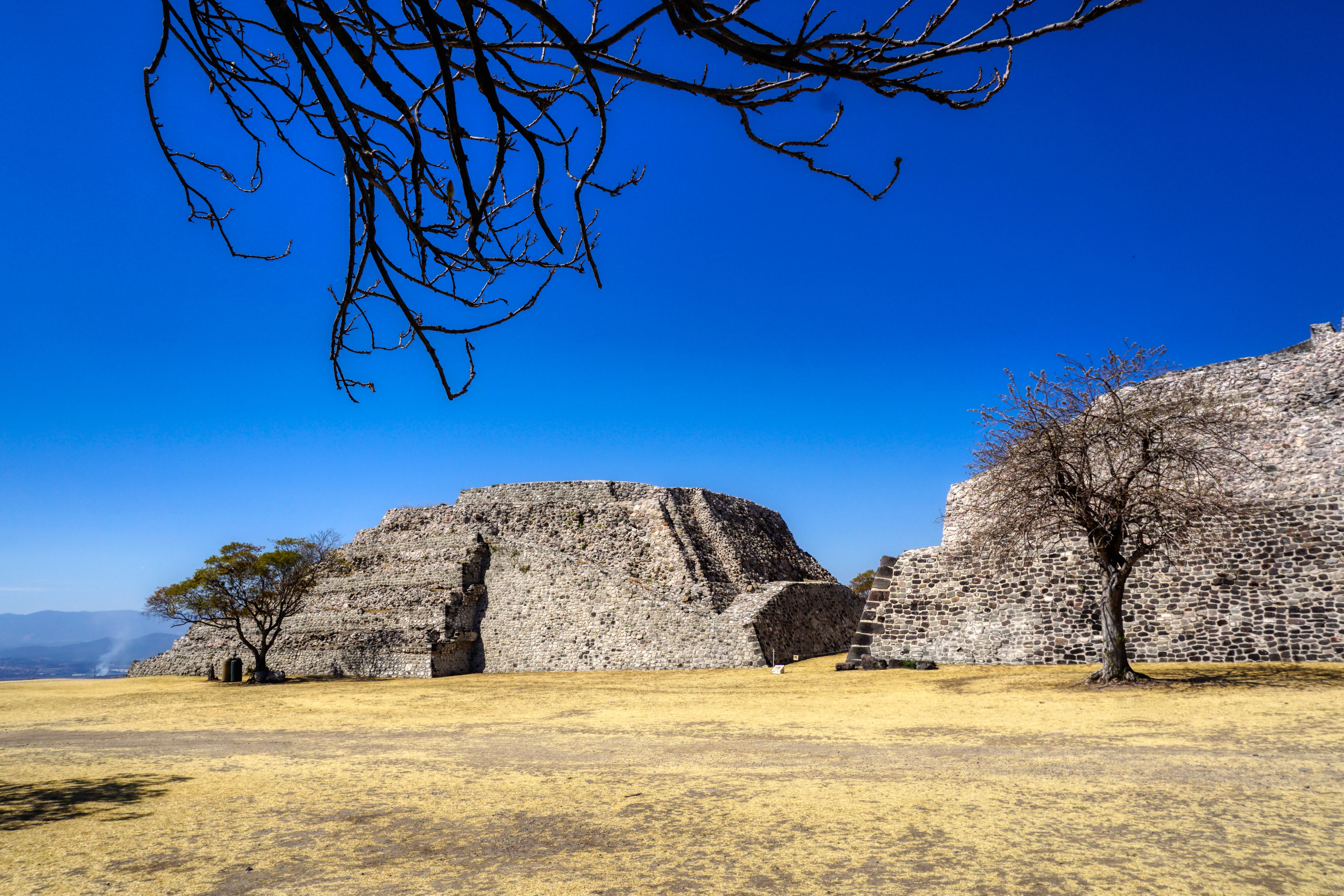
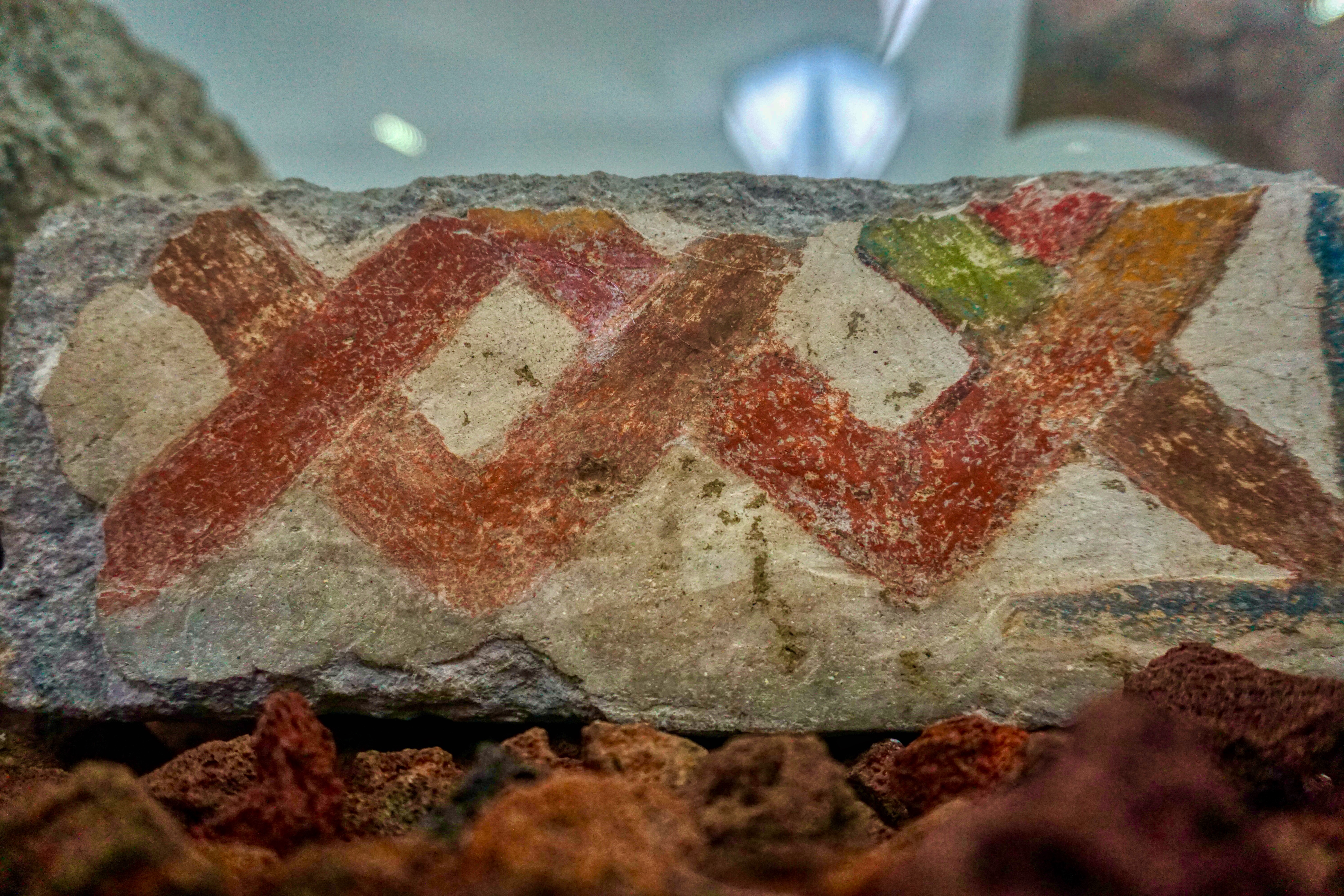
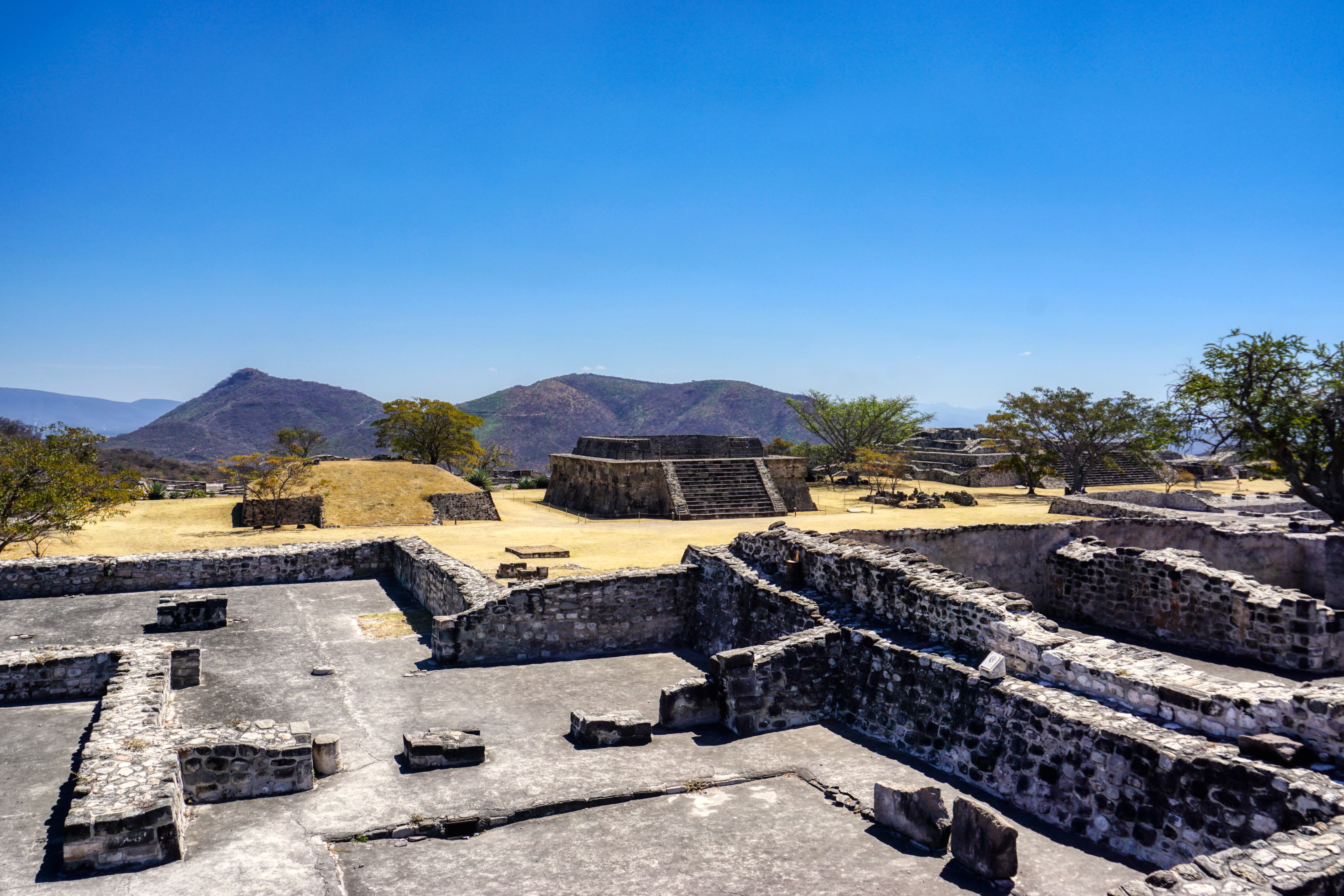
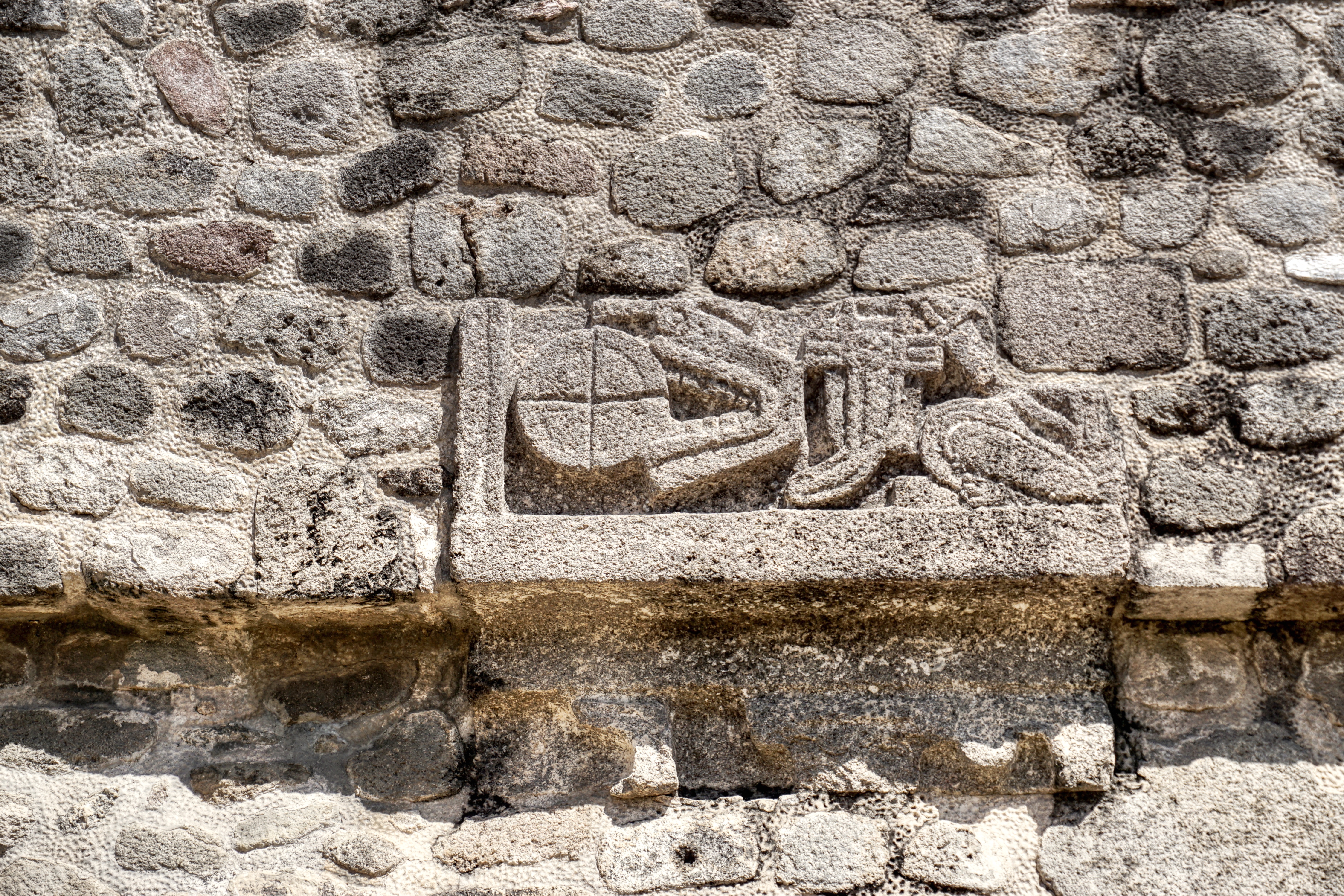
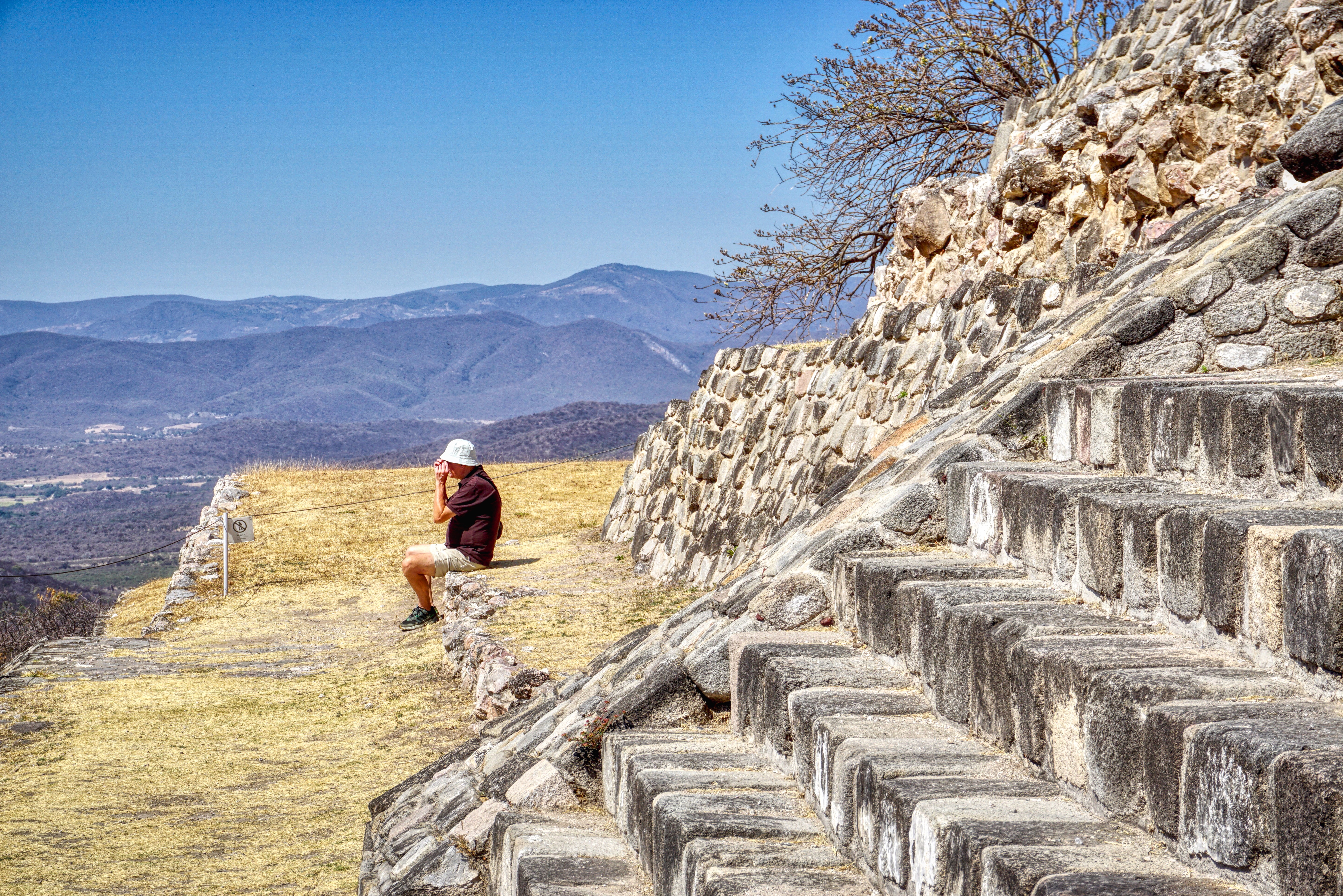
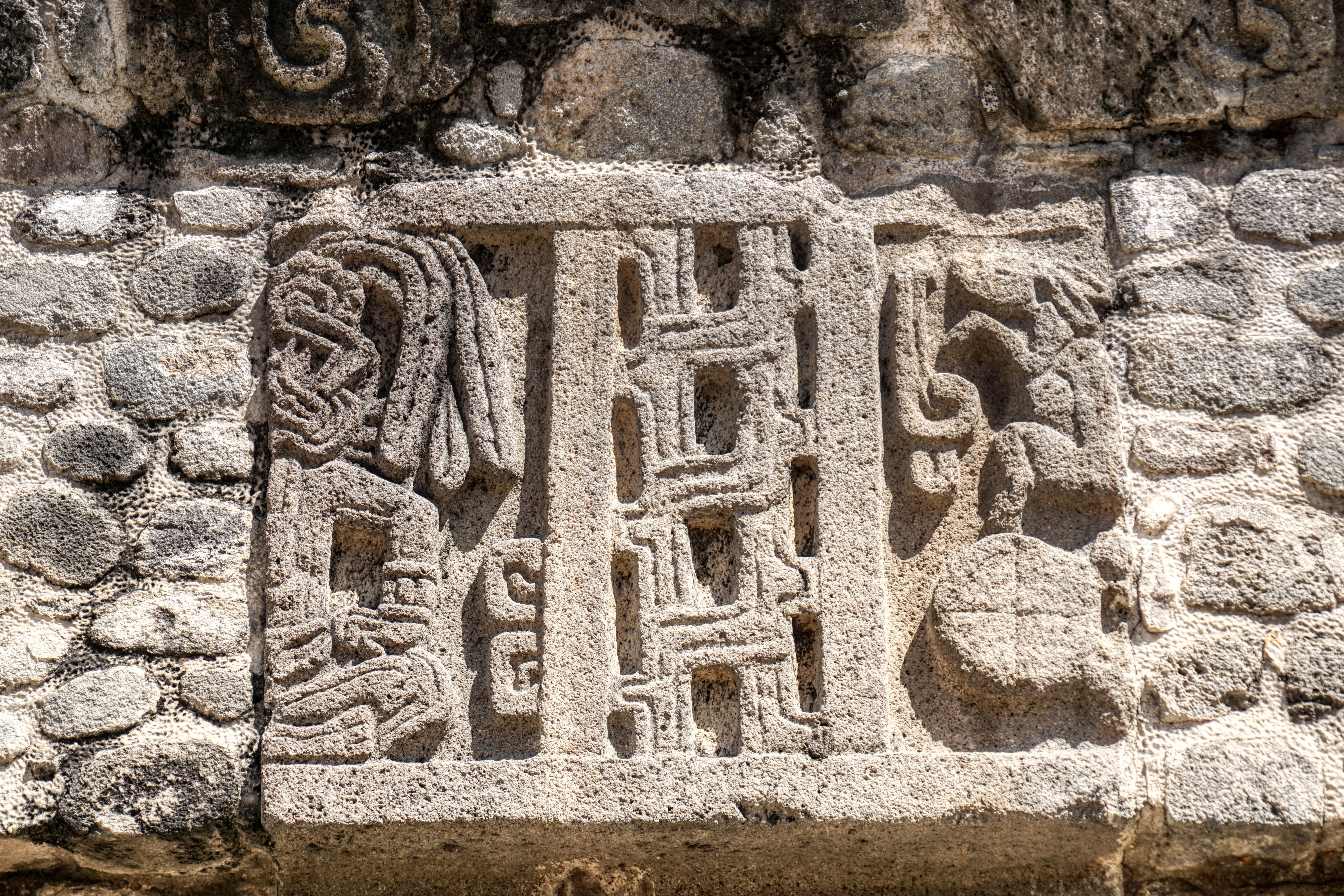
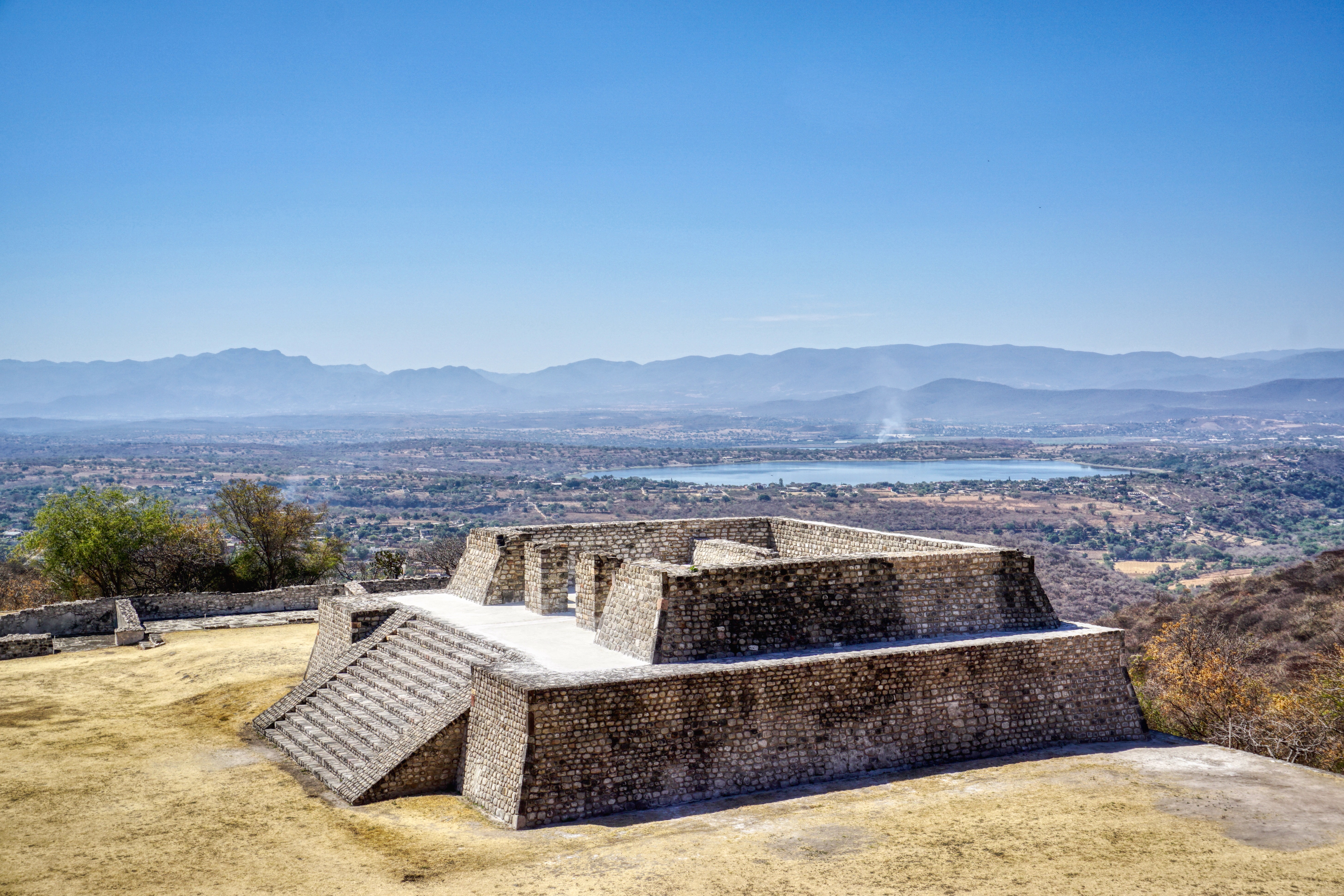


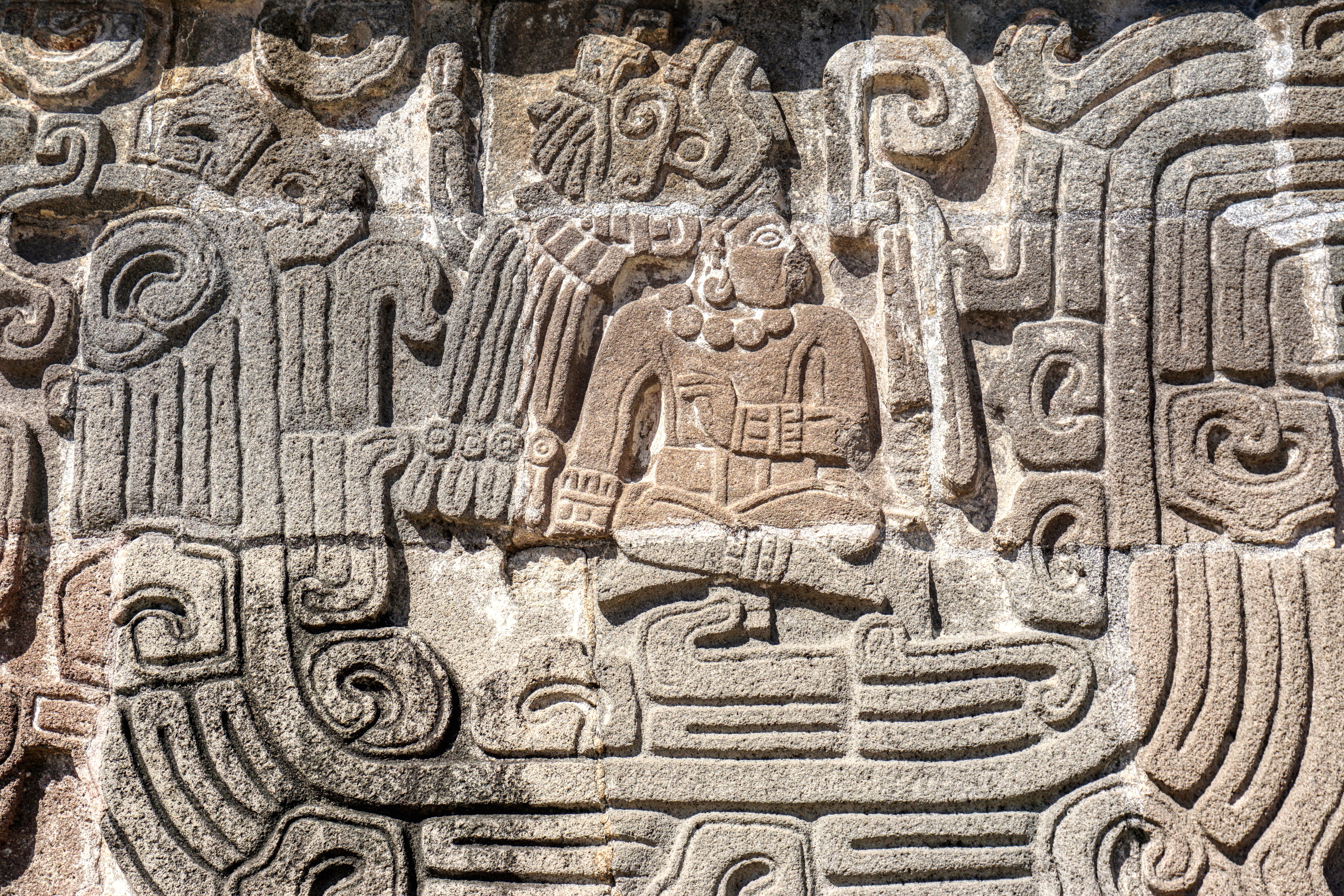
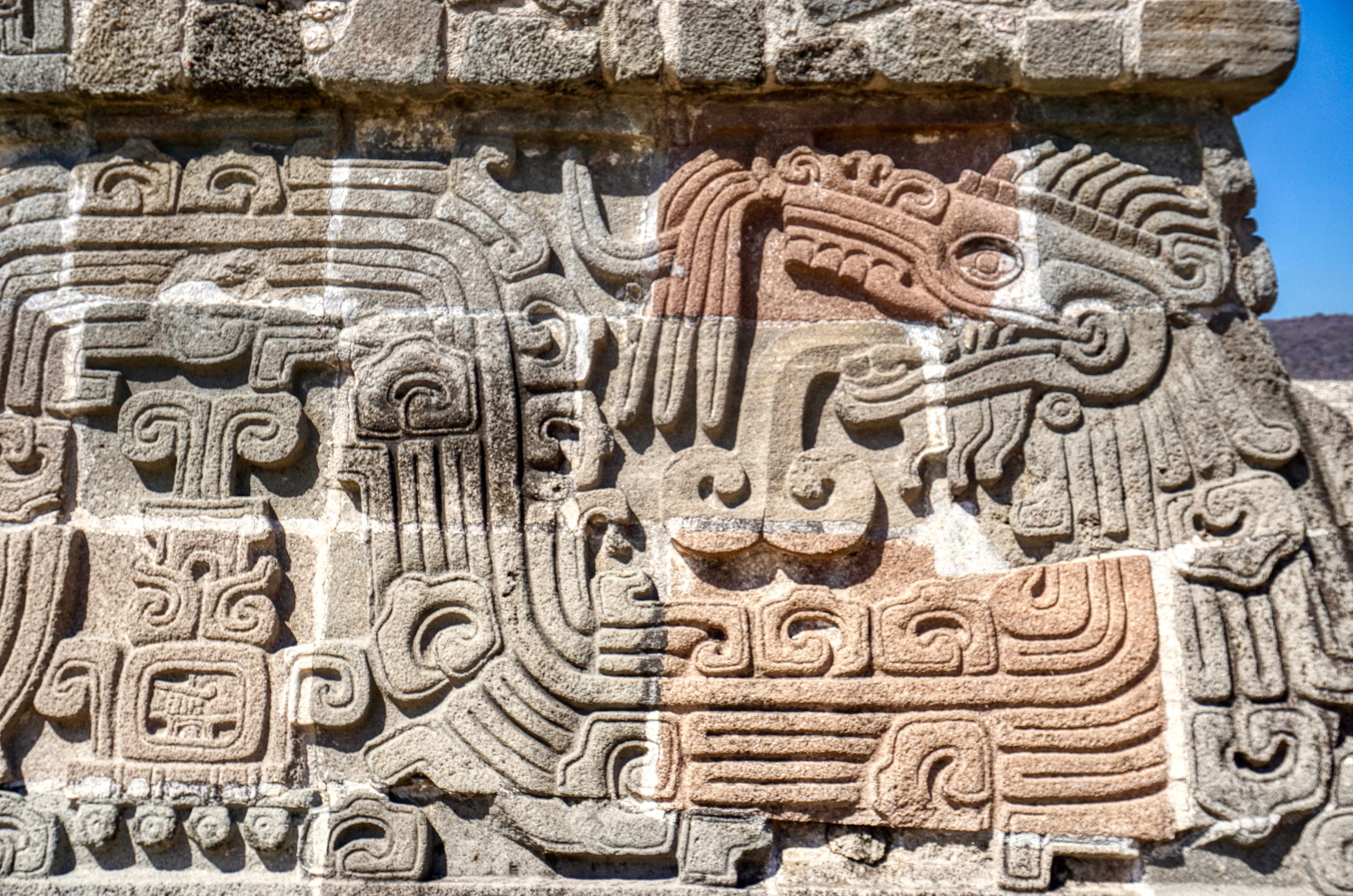
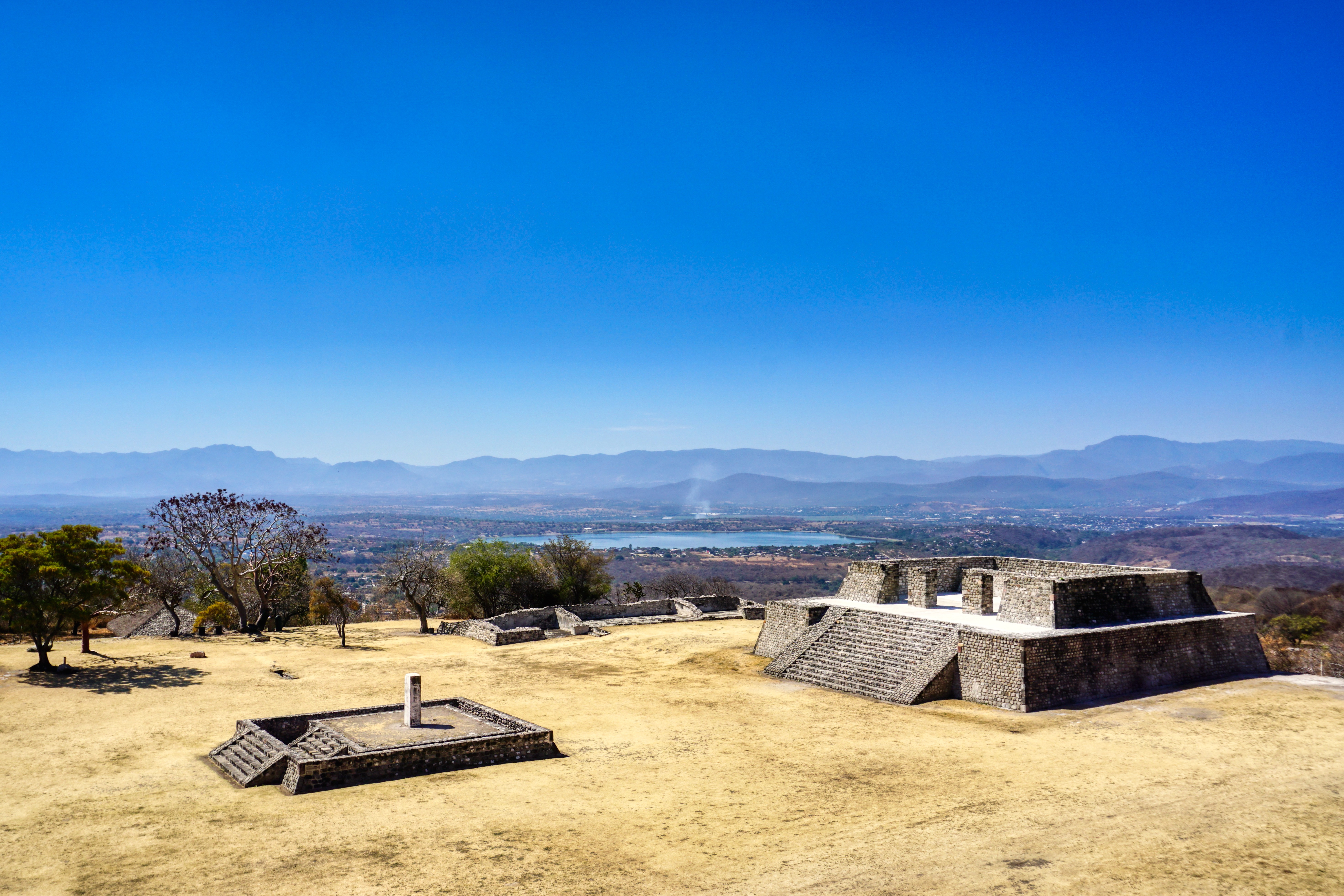
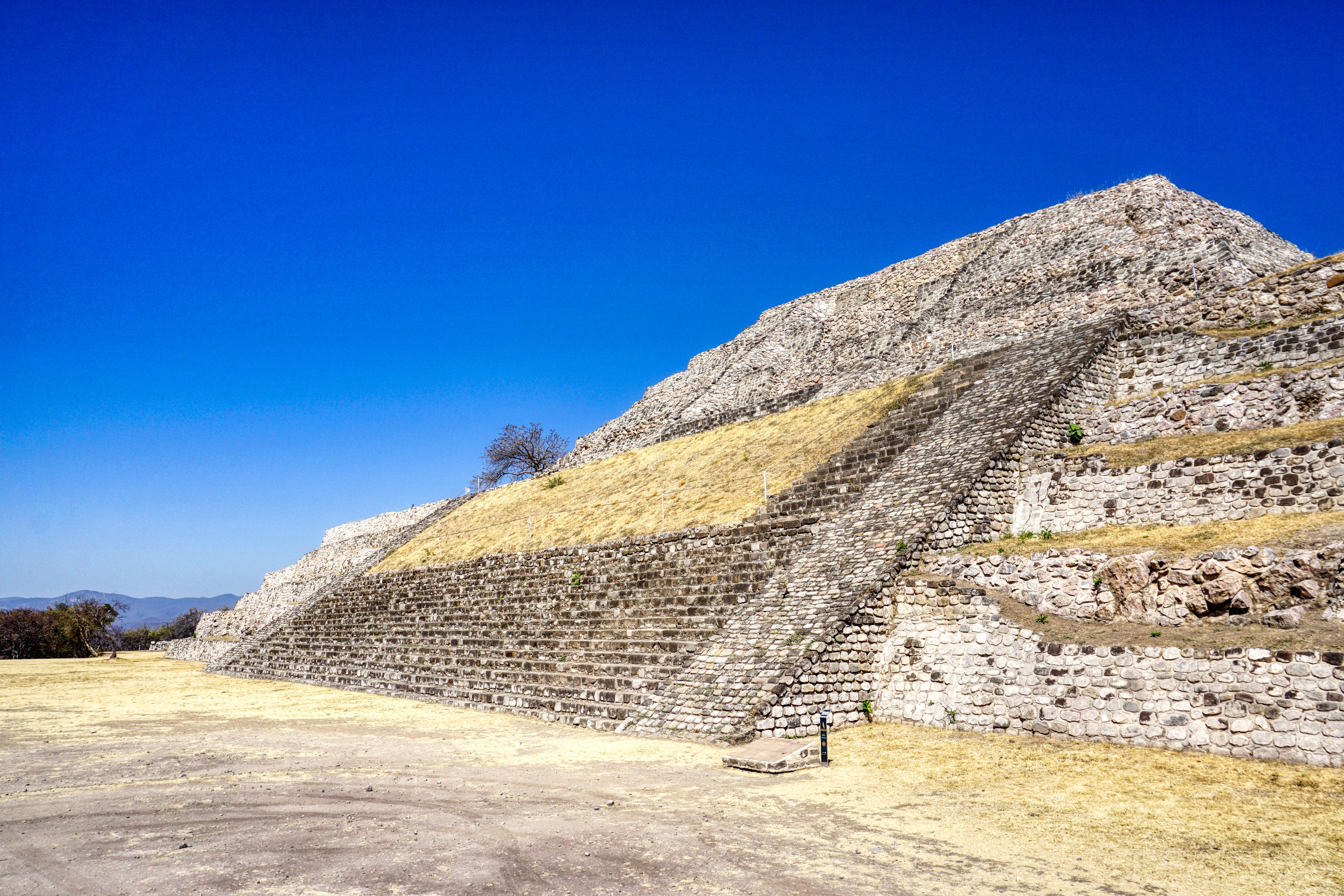
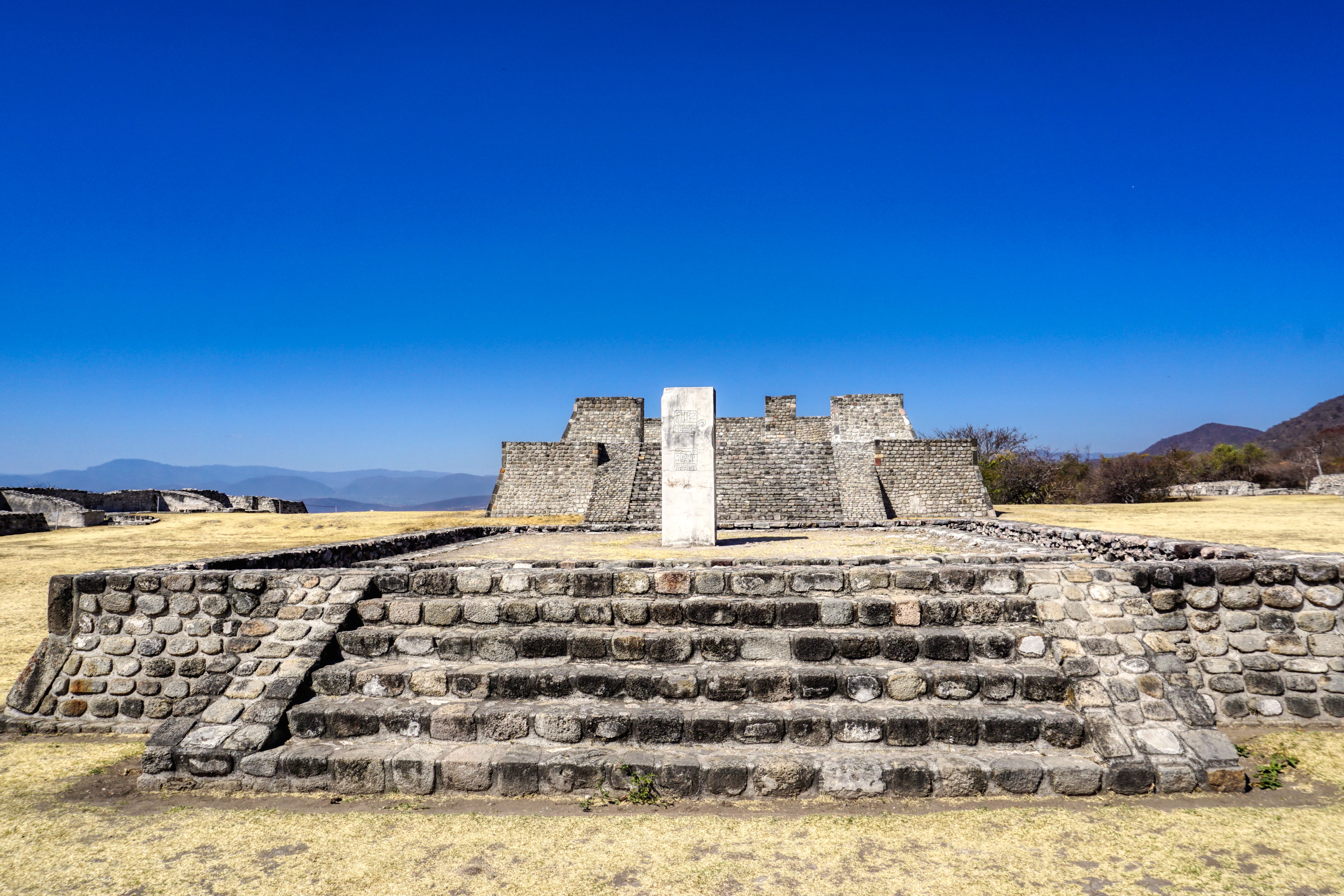
The ancient, elevated city of Xochicalco is around a 35k drive out of Cuernavaca into the dry mountainous Morelos countryside. The name Xochicalco is Aztec Nahuatl (actually bestowed centuries after the citadel was abandoned) meaning ‘In The House of Flowers’, but the site was first occupied by the Olmec-Xicalanca, a Mayan group of traders from the Campeche region of Mexico. It thrived as a fortified political, religious and commercial centre and may have housed up to 20,000 people between the troubled period of 700 and 900 AD following the break-up of the great Mesoamerican states of Teotihuacán, Monte Albán, Palenque and Tikal.
Xochicalco became fundamentally aligned with the great city of Teotihuacán, both physically, scientifically, politically and religiously, and its influence here is evident – the layout of the city, the pyramid structures, the cultural activities, decoration and beliefs – so much so that it’s thought that a migrating group from Teotihuacán must have been responsible for its very construction. It was built on a hill raising the city a further 130 metres over the surrounding land and modified by defensive cuts, passages, barriers, terraces and stepped pyramids.
Teotihuacán (just outside of modern-day Mexico City) had been the first megalopolis in the Americas and one of the largest cities the world had ever seen, reaching a population of some 200,000 in around 400 AD, almost 1000 years before the Aztecs founded their city of Tenochtitlán in 1325. When the Aztecs arrived in the Valley of Mexico around 1250, Teotihuacán, which translates in Nahuatl as ‘The Place Where Men Become Gods’, was already a long deserted city – a complete mystery to the Aztecs at the time, who concluded that a powerful ancestor of theirs must once have lived there. It’s also a mystery today as to who exactly did build Teotihuacán, but it’s now generally agreed to have been descendants from the Toltec civilisation.
What’s striking about Xochicalco is the evidence of a multi-cultural co-existence, with Olmec, Aztec, Mayan, Mixtec Oaxaca and Zapotec civilisations represented. There’s also evidence to suggest that Xochicalco was actually purpose-built for celestial observation and not as a citadel to defend against neighbouring peoples.
We spent a whole morning wandering around this vast hilltop site, high up from the surrounding dusty plains with rolling scrub-covered hills and distant high mountains. Surprisingly, there was no one here! No throngs of tourists in heaving coaches, no tour groups led by miked up guides – no, just us two clambering over these incredibly well-preserved and maintained ruins – in the intense heat and sun of late-morning.
There are several large step-pyramid temples, palaces, three ballcourts, altars, houses and vast plazas, even a sweat-bath and a celestial observatory, though this area was closed due to recent earthquake damage. Astronomers recorded the sunrise every day for generations, observing the sun’s passage across the heavens, thus establishing an understanding of seasons and climate patterns. They marked equinoxes, solstices and even solar eclipses and recorded the cycles of the moon, the planets and stars.
One of the most magnificent structures here is the Pyramid of the Feathered Serpent, Quetzalcóatl, positioned high up at the very top of the whole complex. The stone-carved relief around this pyramid is quite exceptional, with plumed serpents and men with elaborate headdresses, indicating a strong Mayan influence. Also carvings that depict towns which paid tribute to Xochicalco as well as several seated figures that look Mayan. Quetzalcóatl, the feathered serpent, is featured in many commanding friezes all around the temple. Incredible to think that all of this would have been highly coloured, dazzling in the bright hot sun.
A weathered old man hobbled over to us on crutches sporting a wide-brimmed hat and began pointing with a small hand-held mirror that shone light on particular areas of carving, explaining what the glyphs were telling us. Ants’ Spanish is pretty good now but he struggled to understand everything, however enough to grab some interesting information. One of the carvings records a full solar eclipse with a serpent about to swallow a quartered disc. This on the Day of Four Rabbit.
At some point around 900 AD the city of Xochicalco was burned and destroyed with speculation that its success, brought about by a population boom, couldn’t support itself and was unable to feed its burgeoning population, thought to have reached 15,000-20,000 at its height. There is also evidence that a volcanic eruption may have darkened the skies, resulting in crop failure and starvation.
Xochicalco is a hauntingly desolate yet beautiful place, made even more so by having the place completely to ourselves (informative old man aside). This gave us time (three hours – our driver was very patient) and space to contemplate its incredibly rich long history and simply marvel at its staggering architecture, advanced engineering and enlightened thinking and culture.
There are hundreds if not thousands of these Pre-Conquistador sites all over Mexico, some of them world-famous, but others, like Xochicalco, thankfully off the beaten track.
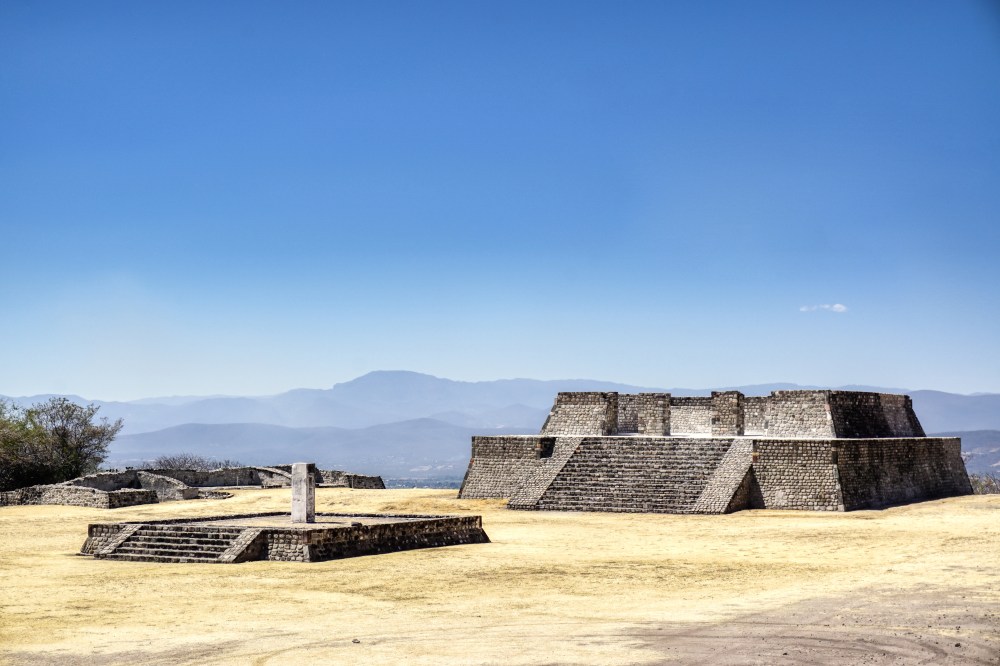
wonderful, quite moving in an eerie way. What about ghosts?
LikeLike
I love the stark clean lines of the structures in the final photo. What fabulous experiences you lads are having 😍
LikeLike